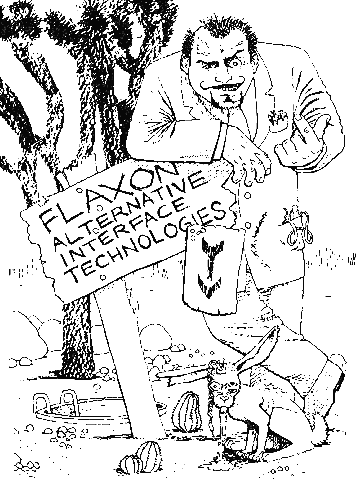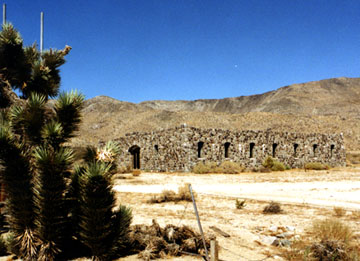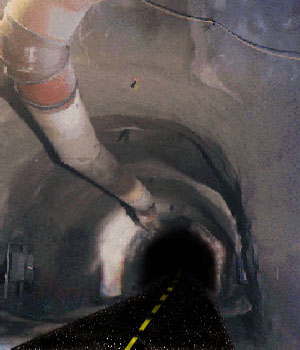At FAIT , we believe in preserving our rich desert heritage. That's why we built many of our laboratory entrances inside abandoned structures, mine shafts, etc., thereby leaving the rugged beauty of the Nevada desert intact.
One other reason for using existing structures is that it falls within FAIT's "Green" philosophy, which dictates the recycling of existing resources wherever possible. All of this contributes to a nicely symbiotic relationship between the researchers at FAIT and the lovely and vast landscape in which we conduct our studies.


There are seven widely-scattered Vertical Transport Tubes leading from the surface down to security airlocks which lead into the lab facility proper. While not all are as clearly marked as the one with which our Founder is shown here (with one of the cute laboratory animal mascots, the "Jackrabbit"), they are fairly easy to spot, provided you're in reasonably close proximity. Although these tubes are rarely used by most FAIT staffers (as there are several hundred rungs on the ladders), they are utilized by some of our more musculatonic researchers in their daily upper-body workouts. The main purpose for the tubes is the emergency evacuation of the facility, should the need arise.
Pictured to the right is our secret drive-in entrance, which is used for delivery vehicles, staff vehicles, and our rolling lab, "The Flaxmobile". The large, darkened doorway on the left-hand side of the structure ramps downward into a cleverly engineered tunnel leading down over 300 feet to the FAIT Motor Pool's parking structure. Of course, this and all other FAIT surface entrances are monitored by an array of sensors, including infrared imagers and closed-circuit video cameras.

